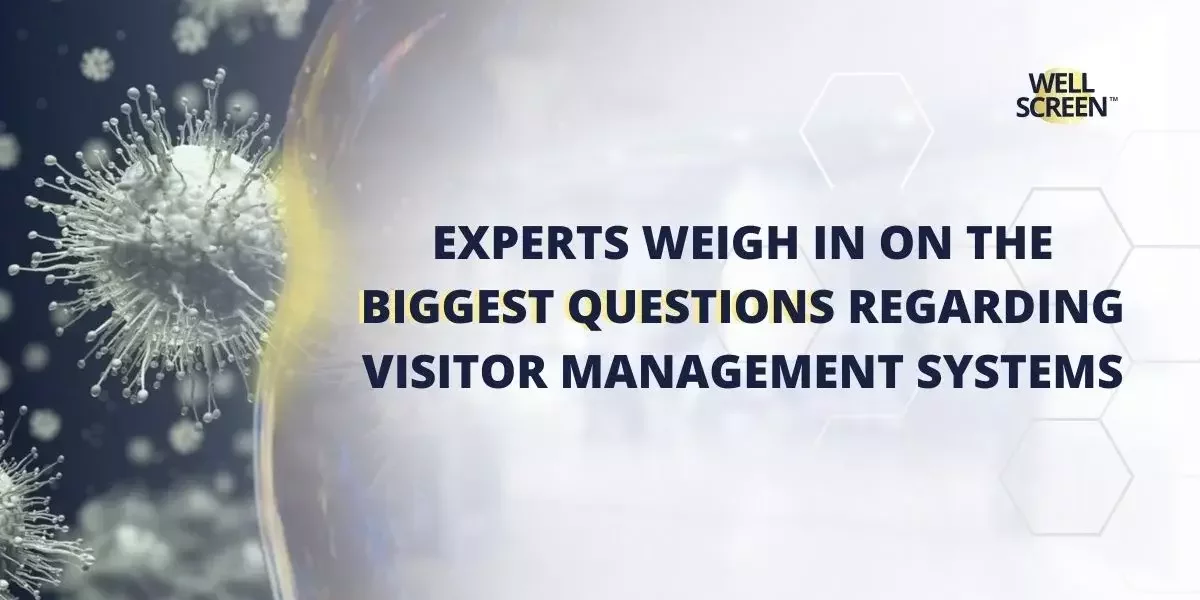Well Screen was introduced to the healthcare market during the early months of the pandemic.
Since that time our experts have partnered with healthcare professionals in a variety of roles to safeguard their facilities with a comprehensive visitor management system. Regardless of where they fall in the selection, implementation and execution stages of putting a visitor management solution in place, at one point, they had similar questions for our experts.
The four questions that our experts most often field about visitor management systems:
1. Why do we need more than an automated temperature scanning device?
We’ve seen facilities’ security go off track when they focus too narrowly on just the temperature scanning process. Temperature screening needs to be a part of the process, but it can’t be the only measure of security. A robust visitor management system includes much more than any single measure, like a temp screen, to provide the best possible safety.
2. Realistically, approximately how long does it take to put together a visitor management strategy?
Depending on your sense of urgency and resources available, the process typically takes about 30 days. In that timeframe, you can complete an 11-step evaluation, build the strategy, gain approval and get your deployment plans in place.
Note - the 11-step evaluation covers:
- Scope
- Entrances
- Workflow
- Integration
- Equipment
- Wellness screening
- Visitor management
- Notifications
- PPE
- Regulatory requirements
- Dashboards and reporting
For more about the evaluation process, download our eBook, 11 Steps to Building an Intelligent Entrance Management Strategy in a Post Pandemic World.
3. Since facility structures are unique and visitor management crosses many departmental lines, who is “in charge” of the visitor management system at the end of the day?
Ownership of the solution can fall in different areas for different facilities. In a long-term care setting, the responsibility generally falls inside the care of the nursing structure. In acute care, security is always integral to the process, so security then manages the process. In other situations, it is patient experience, the quality department, and occasionally the admitting department. However, the key takeaway is that if you have a solid strategy in place, the organizational responsibility can land wherever it fits in your particular culture.
4. Of visitor management systems that offer several reporting options, which reports are most important?
To get a clear, top-level view without feeling buried in data, the following are generally most important:
• The trends of arrivals by employee and provider volumes, visitor volumes, vendor volumes and outpatient volumes.
• Allocation and distribution of resources, especially when it pertains to rush hour times to make sure resources are being used efficiently, and not being drained at low peak times.
• The temperature distribution over time of the population entering the facility.
Again, we know protective measures work, and vaccines will make a big difference.
However, similar to the flu, COVID-19 is unlikely to disappear and will more likely become a virus from which we must collectively and continually protect ourselves, especially the most vulnerable amongst us.
Nationally, there is polarity on whether widespread protective approaches are necessary, which can lose any ground gained in risk reduction.
Protective measures then must be an important part of healthcare’s responsibility.
Healthcare leaders must have sustainable protective measures confidently in place to not only continue fighting COVID-19, but also future infectious diseases.

